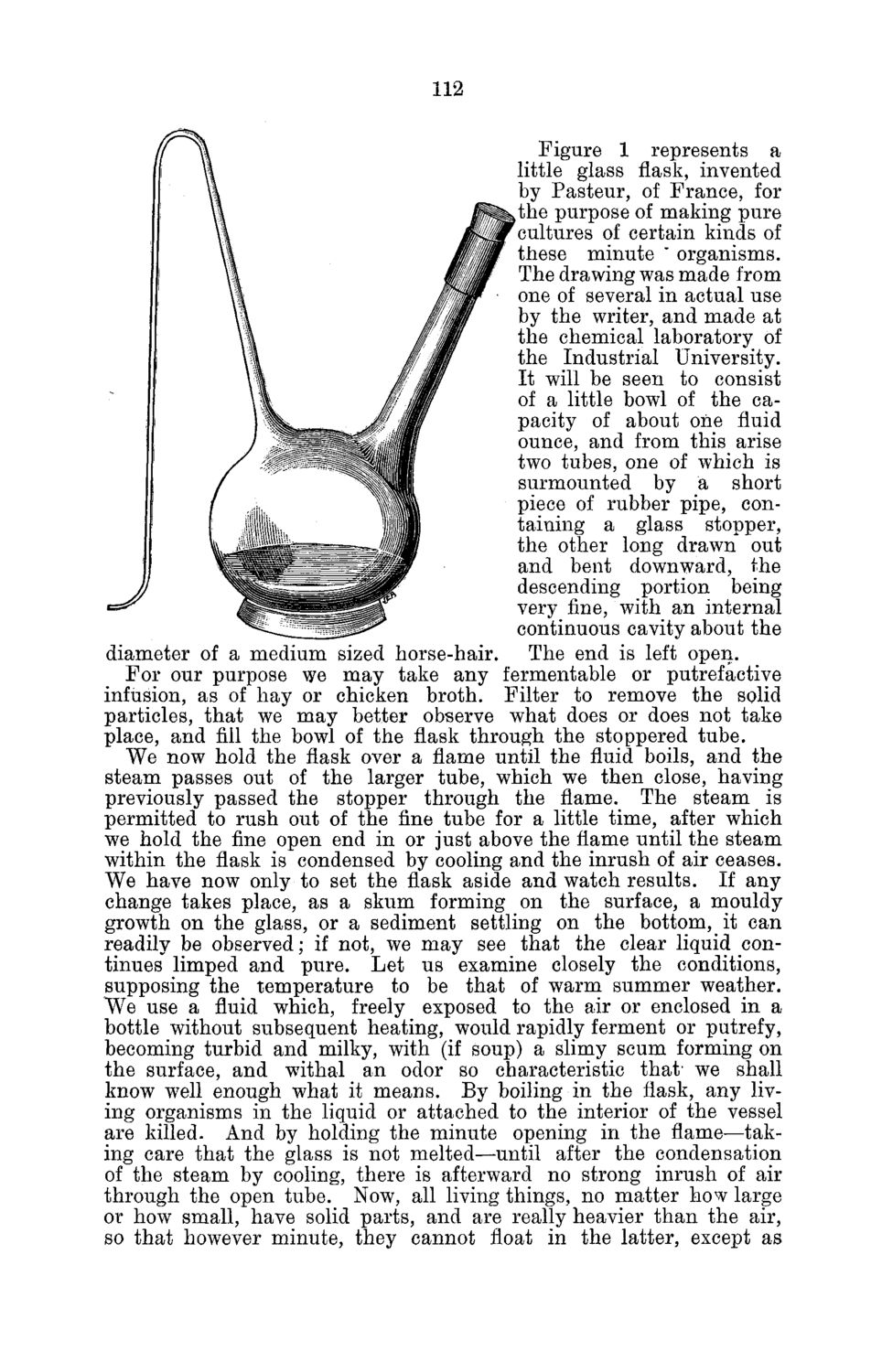| |
| |
Caption: Board of Trustees Minutes - 1882
This is a reduced-resolution page image for fast online browsing.

EXTRACTED TEXT FROM PAGE:
112 Figure 1 represents a little glass flask, invented by Pasteur, of France, for the purpose of making pure cultures of certain kinds of these minute " organisms. The drawing was made from one of several in actual use by the writer, and made at the chemical laboratory of the Industrial University. It will be seen to consist of a little bowl of the capacity of about one fluid ounce, and from this arise two tubes, one of which is surmounted by a short piece of rubber pipe, containing a glass stopper, the other long drawn out and bent downward, the descending portion being very fine, with an internal continuous cavity about the diameter of a medium sized horse-hair. The end is left open. For our purpose we may take any fermentable or putrefactive infusion, as of hay or chicken broth. Filter to remove the solid particles, that we may better observe what does or does not take place, and fill the bowl of the flask through the stoppered tube. We now hold the flask over a flame until the fluid boils, and the steam passes out of the larger tube, which we then close, having previously passed the stopper through the flame. The steam is permitted to rush out of the fine tube for a little time, after which we hold the fine open end in or just above the flame until the steam within the flask is condensed by cooling and the inrush of air ceases. We have now only to set the flask aside and watch results. If any change takes place, as a skum forming on the surface, a mouldy growth on the glass, or a sediment settling on the bottom, it can readily be observed; if not, we may see that the clear liquid continues limped and pure. Let us examine closely the conditions, supposing the temperature to be that of warm summer weather. We use a fluid which, freely exposed to the air or enclosed in a bottle without subsequent heating, would rapidly ferment or putrefy, becoming turbid and milky, with (if soup) a slimy scum forming on the surface, and withal an odor so characteristic that' we shall know well enough what it means. By boiling in the flask, any living organisms in the liquid or attached to the interior of the vessel are killed. And by holding the minute opening in the flame—taking care that the glass is not melted—until after the condensation of the steam by cooling, there is afterward no strong inrush of air through the open tube. Now, all living things, no matter how large or how small, have solid parts, and are really heavier than the air, so that however minute, they cannot float in the latter, except as
| |